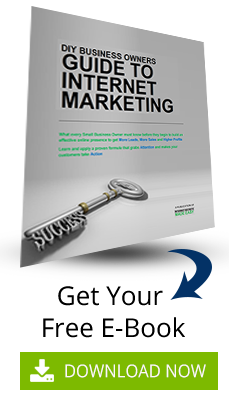 I found a very interesting article in Copyblogger. This article will teach us on how to set goals for our content and weave them to what we create. This article was written by Sean Smith.
I found a very interesting article in Copyblogger. This article will teach us on how to set goals for our content and weave them to what we create. This article was written by Sean Smith.
How does the current piece of content you’re creating fit into your content strategy?
New content you produce needs to have a goal before you even start writing. Goals for your content benefit both you, the digital content creator, and your audience.
Allow me to elaborate with an example from one of my favorite stories, Harry Potter.
Hang in there; this is actually a fantastic lesson. Mind your eyeballs if you haven’t read the books or watched the movies — and plan to. There are spoilers.
Why content goals provide direction and depth
Since the Harry Potter book series was adapted to film before the book series had ended, author J.K. Rowling knew that one key character in the films had to know how the story ended so he acted his role appropriately.
The role that needed this knowledge was Severus Snape, played by Alan Rickman. Severus was always an instrument of suspicion throughout the first few books, and even up until the last moments of the last book.
It seemed as though there was a witch-hunt (I couldn’t help myself) out for him by the Harry Potter gang in every book, suggesting that he throughly embodied evil — that was, until the very end.
At the end of the story you find out, through Severus’s tears, that he was actually protecting Harry the entire time, and had always and will forever be deeply in love with Lily, Harry’s mother.
Without knowing how the series would end, Rickman’s portrayal of Snape would have been misrepresented, and the impact of his reaction at the end of the series would have been abrupt and confusing.
It is for this reason that J.K. Rowling had told Alan Rickman how the books would end, prior to filming the first movie.
The ending needed to be clear to the actor so that the entire story could be engaging and interesting to the audience.
Had Rickman not known the ending, his acting would have been one-dimensional; he would have been a recluse, fully dark, and you wouldn’t have been able to sense his mysterious complexity.
The role wouldn’t have filled you with fascination and curiosity throughout the story.
Connect and bond with your readers
Once you set a goal for your content, it’s even easier to inform the reader of the innate benefit he or she will gain by reading.
In fact, informing readers of the benefits of your content makes readers feel more invested in the content because it’s knowledge they would otherwise miss out on if they did not read it.
Your audience should be your central focus when you set content goals. As you determine the direction of an article, empathize with potential readers.
- What do they need to learn?
- How will this content help them with their own goals?
- Why would they share this content or bookmark it for reference at a later time?
A goal gives your article a sense of purpose, both for your content strategy and for the reader. If you don’t define a clear message in your content before you begin, your article may lack structure and cohesiveness.
The end result may be a weak call to action. Readers may be left wondering “now what?” Instead, they should be excited about what comes next.
Set goals for your content in three steps
If you’re at all like me, you probably have a barrage of potential article headlines flying through your brain all day.
To make them manageable, simply make a list of each potential article headline, review each topic, and add notes about your goals underneath each and every one.
Here are the three steps I take:
1. I review my list of post topics
As I review, I think about how each article could benefit my content marketing goals.
Should I focus on growing my email list, ranking for a keyword, or attracting more clients?
Are there questions about my products or my industry that haven’t been adequately answered yet? If so, these posts become top priorities.
2. I divide the posts into categories
What’s the best format for accomplishing my goal?
Is it through a blog post, a slide presentation, an infographic, or even just an image with a quote?
Focus on your readers’ needs and the best context for them to receive the information.
Once I know the format, I assign a simple goal to each piece of content.
3. I compare my content to my goals
If my goal is to attract new clients, I’ll include a compelling call to action to try my services.
If my goal is to gain email subscribers, my content will contain loads of useful information and my call to action will make people so excited to sign up they don’t even notice their fingers typing in their email address.
If I’m writing for another publication, I’ll keep that audience’s needs in mind and use a writing style that is comfortable for them.
After I’ve produced a piece of content, I’ll read its goal and then copy edit the article with that goal in mind. I do this for my own content, as well as for my content marketing clients; it helps keep the message focused.
And when your message is clear throughout your content, you have a solid foundation to be creative and produce unique media.
Verify that you accomplished your goal
After you publish your content, you need to monitor its performance.
Can you interact with those who comment on your content or share it on social media to find out if the content was useful?
Can you find out more about other type of content they’d like to receive?
Build relationships with your audience so that you can form a bond with them and make your content more valuable.
Repeat this practice for each piece of content you publish.
Over to you …
You can begin setting content goals right now, with the current piece of content you’re creating.
Ask yourself:
- What do I need to accomplish?
- How does this piece of content help me achieve my goal?
- How will my creation benefit my readers?
If you can thoroughly answer these questions, you’re on the right track; if you can’t, figure them out before you finish writing so you produce an engaging, goal-driven article that clearly benefits your audience.
How do you set goals for your content and make sure you achieve them?
ARTICLE SOURCE: This content is syndicated news that can be used for your research, and we hope that it can help your productivity. This content is for educational purposes and is not made for any kind of commercial purposes of this blog.

